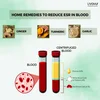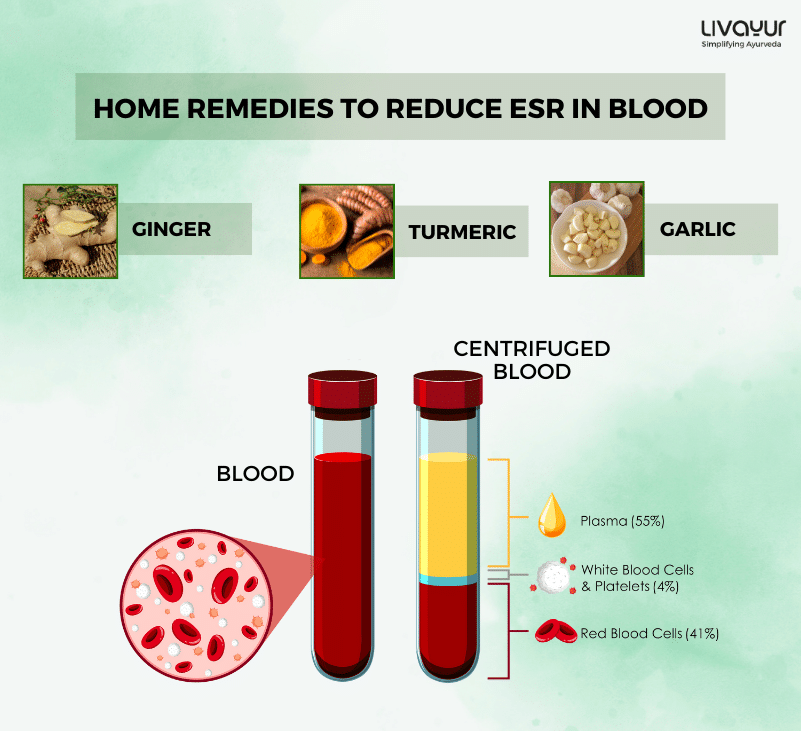This article has been reviewed by experts

The tiniest blood cell, the platelet, can only be observed under a microscope. In their inactive state, they have the exact same shape as little plates. When a blood vessel is injured, it will signal that fact. In response to that signal, platelets will move toward the location and change into their “active” configuration. Platelets develop extended tentacles to reach the blood vessel that has ruptured, eventually taking on the appearance of an octopus or spider. [1]
Want to know how to increase platelet count naturally? Read our related article on – Top 15 Foods to Increase Platelet Count Naturally
Understanding Platelet Count
An easy and frequent test to determine how many platelets are in your blood is a platelet count. Megakaryocytes in the bone marrow give rise to the microscopic blood cells known as platelets, or thrombocytes.
When a blood artery is damaged, platelets coagulate to produce clots. The amount of platelets per microliter (mcL) of blood is measured by the platelet count, a crucial diagnostic technique. It can assist medical professionals in identifying potential health issues linked to blood clotting, bleeding disorders, and wound healing.
A complete blood count typically includes a platelet count. The number of platelets, white blood cells, and red blood cells are all counted during this test. Created in the bone marrow, blood cells. [2, 3]
Normal Platelet Count by Age [3]
To avoid excessive bleeding and to encourage efficient clotting, a normal platelet count is essential. Thousands per microliter of blood (K/µL) is the standard unit of measurement for platelet counts. Age must be taken into account as a crucial component for determining the typical range. An extensive breakdown of typical platelet count range by age is provided here:
| Age (Years) | Approximate Platelet Count (Male) | Approximate Platelet Count (Female) |
| Under 5 | 340,000 | 330,000 |
| 5 – 9 | 310,000 | slightly less than 310,000 |
| 10 – 14 | 280,000 | slightly more than 280,000 |
| 15 – 17 | 250,000 | 270,000 |
| 18 – 34 | 240,000 | 265,000 |
| 35 – 49 | 245,000 | 270,000 |
| 50 – 64 | 230,000 | 260,000 |
| 65 – 74 | 220,000 | 250,000 |
| 75 and over | 215,000 | 240,000 |
Factors Affecting Platelet Count
Platelet count, crucial for our circulatory system, is regulated by various factors. The normal range is 150,000 to 400,000 platelets/μL. Thrombopoietin, a hormone primarily from the liver and kidneys, controls platelet production, ensuring about 100 billion platelets are released daily.
Thrombocytopenia (<150,000/μL) can result from platelet consumption, splenomegaly, medications, infections, or bone marrow issues. Thrombocytosis (>400,000/μL) elevates thrombosis risk. It can be inherited or acquired, while secondary thrombocytosis often links to inflammation or cancer.
Genetics, gender, age, and seasons affect platelet count. Genetics play a role, with twins showing similar counts. Gender-wise, females often have higher counts. Age leads to count decline, possibly due to stem cell changes or epigenetics. Seasonally, counts rise in autumn and winter, possibly due to more infections. Populations like Sardinia’s Ogliastra region offer insights into these influences. [7]
Importance of Normal Platelet Count in Blood
To maintain general health and wellbeing, one must keep their platelet count within normal range. Several health problems can result from abnormal platelet counts:
- Low Platelet Count (Thrombocytopenia): Insufficient platelet production by your bone marrow results in thrombocytopenia. Blood cells called platelets assist stop bleeding by forming blood clots. If you have thrombocytopenia, you could bleed a lot, and it might be challenging to stop the bleeding. People who have certain medical problems, such as autoimmune illness, or who take particular drugs may experience thrombocytopenia. Usually, the underlying illness that created the problem and/or the offending medicine are treated by healthcare professionals in order to treat thrombocytopenia.
Mild thrombocytopenia can be symptomless, but signs often include persistent bleeding from cuts or nosebleeds. Additional symptoms may involve bleeding gums, dark stool, pale pink urine, blood in vomit, heavy menstrual periods (menorrhagia), tiny red or purple leg dots (petechiae), skin spots (purpura), increased bruising, and rectal bleeding. [4]
- High Platelet Count (Thrombocytosis): Thrombocytosis is a condition marked by an excess of platelets in the bloodstream, which can lead to overly sticky blood. While many individuals with elevated platelet counts remain asymptomatic initially, symptoms may arise, particularly in cases of reactive thrombocytosis. These symptoms often revolve around abnormal bleeding and clotting, encompassing headaches, easy bruising, weakness, dizziness, and bleeding from the nose, mouth, or gums. More serious cases may result in abdominal blood clots (Budd-Chiari syndrome) and elevate the risk of strokes or heart attacks. Additionally, individuals with essential thrombocythemia may experience erythromelalgia, a condition causing pain, swelling, redness, numbness, and tingling in the hands and feet. [5]
- Dengue Fever: In dengue fever, symptoms typically begin with high fever, body aches, headaches, rashes, and occasional bleeding. Normal platelet count dengue drops significantly, often falling below the normal range of 150,000–450,000 platelets/μL and occasionally plummeting to <40,000 platelets/μL between day 3 and day 7 of fever. Some patients require platelet transfusions to maintain normal clotting. Thrombocytopenia in dengue is attributed to reduced platelet production in the bone marrow and increased platelet destruction. Platelet activation and dysfunction are also linked to the disease’s prothrombotic complications. Additionally, the activation of complement factor C3 and the binding of the C5b-9 complex to platelets contribute to platelet destruction and severe thrombocytopenia, while microparticles derived from activated platelets correlate with disease severity. [6]
Conclusion
In order to ensure adequate clotting and wound healing, a normal platelet count is a crucial aspect of general health. For healthcare practitioners to successfully detect and treat a variety of medical disorders, they must be aware of the typical platelet count range by age. The usual range for platelet counts is between 150,000 and 450,000 per microliter of blood, though this range may vary slightly as people age. Deviations from this range may point to hidden health issues that call for additional testing and medical intervention. Maintaining excellent health throughout one’s lifetime requires regular checkups and monitoring of one’s platelet count.
FAQs:
Does platelet count change daily?
Platelet counts can fluctuate but don’t typically change dramatically on a daily basis. Various factors, such as illness, medications, or medical conditions, can influence platelet levels. However, the body is usually able to maintain a relatively stable platelet count under normal circumstances. If you’re experiencing significant and consistent changes, it’s essential to consult with a healthcare professional for a thorough evaluation.
How long does platelet count last?
Platelet counts can vary from person to person and depend on factors like health and medical conditions. However, if you’re referring to the lifespan of individual platelets in the bloodstream, it’s generally around 8 to 10 days. After a short rest, your body is capable of replenishing platelets quickly, usually within 48 hours.
How fast do platelets change?
Platelets change quite rapidly. After a short rest, your body can replace them swiftly, typically within 48 hours.
Disclaimer: This article is written from a health and lifestyle perspective. It is for general information and not meant to substitute any medical advice. Please consult your doctor for appropriate medical consultation.
References:
- https://www.hopkinsmedicine.org/health/conditions-and-diseases/what-are-platelets-and-why-are-they-important
- https://my.clevelandclinic.org/health/diagnostics/21782-platelet-count
- https://my.clevelandclinic.org/health/diseases/14430-thrombocytopenia
- https://my.clevelandclinic.org/health/diseases/13350-thrombocytosis
- https://www.ncbi.nlm.nih.gov/pmc/articles/PMC5282509/
- https://www.ncbi.nlm.nih.gov/pmc/articles/PMC3012758/

















